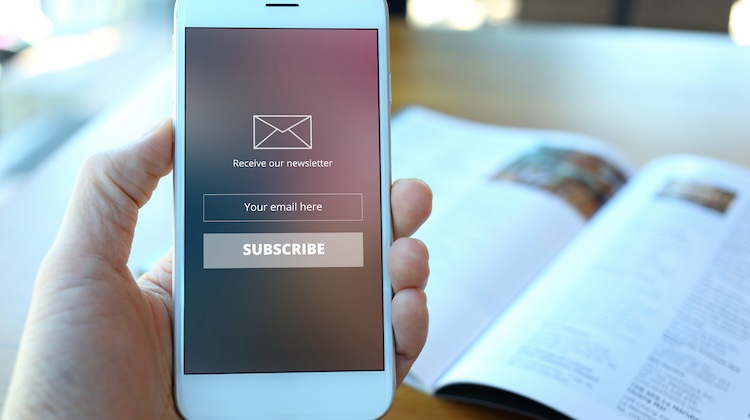
Every single (successful) company has an email list of people who have opted in to receive information about them. As a one-person company of your own, someone whose job is to both write copy and find people to write it for, this begs the question: Do you need a newsletter of your own?
First, you need an online portfolio.
Then, you need to make sure your online portfolio is showing clients your best-of-the-best samples, has a clear way to contact you, and a knock-out USP. Then you can consider a newsletter. So, if you’re not quite there yet, bookmark this post to revisit when you’re ready.
Why Newsletters Are So Powerful
Here are two truths of the web: Many people who visit a website don’t need what that website provides at that moment. Think about it: How often do you actually purchase from a website the first time you visit it? Probably not very often at all. So, people will come to your website, check you out and leave.
Truth number two, though, is the bigger problem: The vast majority of visitors to a website won’t come back. They may intend to come back, but they forget to. Or they want to come back, but they can’t remember what the URL is. Or they want to come back, but they find another website for something just as good in the meantime.
In a copywriter’s case, this means people are looking at your website, maybe even intending to get in touch with you later, but forgetting about you once they leave, losing your URL, or finding a different copywriter before they find your site again.
Obviously, that’s bad for your business.
So, how do you keep yourself front of mind for these people? One of the biggest solutions companies use is email. They provide site visitors a benefit for signing up (everything from getting news and info to getting discounts) and then periodically send emails when they have news or deals to share.
These emails allow companies to give a gentle reminder to their audience (people who have actually asked to receive information from them) about themselves and their offerings.
As a copywriter, you could do the same thing yourself. Email Service Providers (ESPs) like MailChimp and Constant Contact (among others) often make the process of collecting email addresses, building emails, and then sending them very easy. They also often offer free subscriptions if you have fewer than a certain number of subscribers.
4 Tips for Your Copywriting Newsletter
1. Offer an incentive to sign up
Just “news and info” might work, but don’t forget that “free” is the most powerful word we have to wield. You could offer a free project consultation or a free e-book with a few copywriting tips.
Use your copywriting skills to make the sign up box copy on your site as compelling as possible.
2. Keep the content useful to prospective clients
In your newsletter itself, remember that you want to make it useful to the people who sign up. (If you don’t, they’ll just unsubscribe!) So feel free to include news about the projects you’re working on and new updates to your portfolio, but be sure to also send info about new trends in advertising or your thoughts about different campaigns.
You’ll want to just tease these a bit in your newsletter and offer the full-length content on a blog section of your site. Remember, of course, that when I talk about putting a blog on your site, it’s for professional use only. No pictures of your cat or your trip to Cabo; only links to interesting articles and insight into advertising campaigns and trends.
A lot of new copywriters connect with other copywriters and find themselves writing to this audience. But remember: other copywriters aren’t going to hire you for copywriting projects. Write to the folks who you want to hire you!
3. Establish a consistent cadence
Aim to send out your newsletter once a month so that you’ll have plenty of time to collect items to send and to update your portfolio site.
You can send it more often if you find yourself with a great deal to say, but I wouldn’t send a newsletter more than once a week. This may get overwhelming and you risk prospective clients unsubscribing. It also may be too much for you to keep up with, especially as you start getting client work! Consistency is key.
4. Make sure you’re collecting emails correctly
In order to send to people, they have to sign up on your website; meaning, they have to freely ask to get your email newsletters themselves. You can’t just add people to your send list.
Meeting someone, getting their business card and then adding them to your list is a bad idea—it could even get your emails marked as spam and force your ESP to shut down your account.
But provide good and useful information, send regularly and responsibly, and you’ll stay in the minds of those contacts (and potential clients and employers!) you might otherwise have lost for good.
Your turn! What kind of content could you put in your newsletter? Let us know in the comments below!
Last Updated on July 4, 2023
Leave a Reply